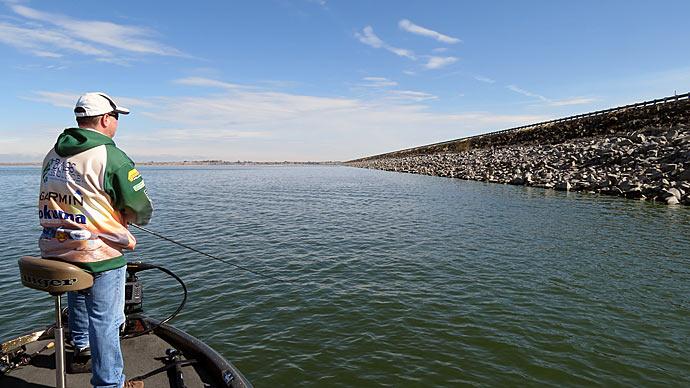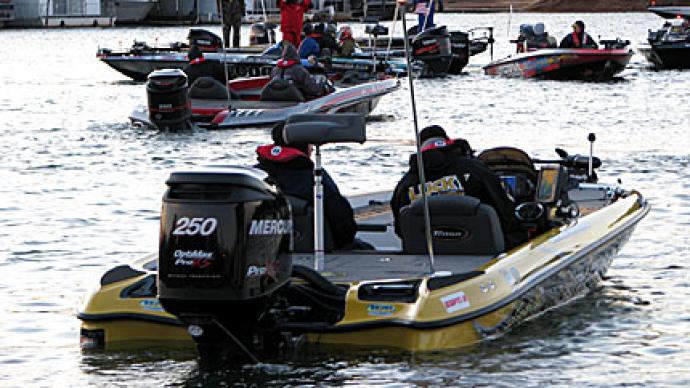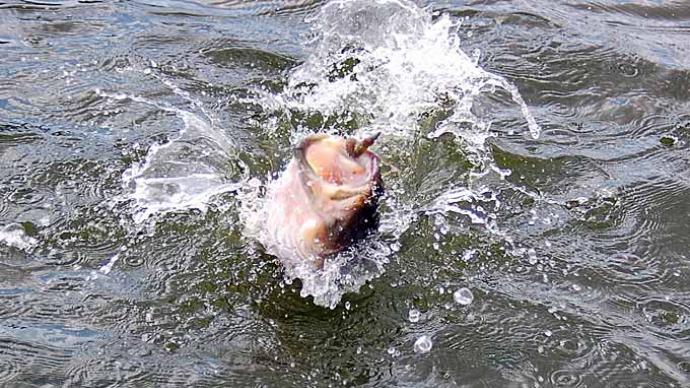
I know that the title of this article can mean a great many things to a lot of different people. For example, how long is long enough when visiting your in-laws? How long is long enough to be engaged before the big commitment? I am talking about a question that I have been asked many times from my guide clients, emails, and even some phone calls. That is, "how long is long enough" spending time with a specific bait or at a location when fishing for bass?
I guess the best place to start is always at the beginning. Let's say that we will plan a day on the water, and we want to catch as many bass as time will allow. Doesn't every angler have these "high hopes?"
There are several factors to consider before you even hit the water, such as:
- Season
- Water Temperature
- Knowing your Natural Forage
- Daily Conditions
- Size of the Body of Water
- Choosing the Right Baits
- Using the Proper Equipment
- Locating Structure
- Keeping it FUN! Always!
The basics listed above are an excellent place to start when putting the "high hopes" plan together.
For example, let's start by saying that we want to fish a body of water as large as the Santee Cooper System located in South Carolina (which is made up of Lake Marion & Lake Moultrie.) If we have an impoundment of 186,000 acres of water with this system and just one day to fish. Where do we start? How much time do we spend in one place?
The first thing I would do is get a hold of an underwater contour map of the lake and study it. These maps will show you contours, depths, points, stream beds, and boat launching areas. By studying this first, you can section off certain spots on the map that look appealing to you and, in the same process, eliminate a good portion of the body of water that you don't have the time to fish in one day. Circle a half dozen or so areas that look good in the section and start looking for a good working pattern. Here's what to look for during the different seasons:
- In the spring, summer, and fall, look more in the shallows for warmer water temperatures, hard-packed (or sandy) bottoms, structure (of any type), and especially vegetation areas. Just make sure that the crucial factor to remember is to look for shallow water close to deep water areas such as points, drops-offs, roadbeds, channels, etc.
- During the winter months, look for the opposite in most cases! That is, deeper water close to areas with structure.
Here is a good rule when choosing the right baits and equipment. Choose lures that cover the surface, the bottom, and in-between. Also, keep in mind that the proper equipment such as rods, reels, and line is as crucial as the lure selections.
Usually, the difference in fishing cold water areas from the warm water areas is to know the activity levels of the bass. The bass tends to get more sluggish and inactive in cold water because their metabolism changes with the water temperature. On the other side of the coin, the warmer the water temperature, the more active the bass. Remember that the more active the bass are, the more often they feed.
Here are some tips on certain baits that generally work anywhere in the U.S. where you can find bass habitat.
Surface: Floating worms, Hula Poppers, Tournament Frogs, soft and hard jerk baits, Zara Spooks, and Torpedoes.
Between Bottom & Surface: Crankbaits, spinnerbaits, soft and hard jerk baits, jigging spoons, and swimbaits.
Bottom Baits: Jig & pig combos, Senkos always work! Carolina-rigged baits, Texas-rigged baits, and Gitzits (or tube baits.)
There are many more baits, but I have fished just about everywhere in the U.S. and have had success with these particular baits. I have successfully used these baits under almost every condition possible and in every season.
When should you put a bait down and try something else? Usually, when it's overcast or in low light conditions, I would start in an area where I'm pretty sure that bass are in a topwater pattern. This is because bass won't be tight to structure areas as they would be in a bluebird (or sunny) sky condition. I will start with two different topwater baits, such as a Zara Spook and a stick bait (hard jerkbait.) I have found over many years that if a fish hits a topwater bait, either of these two will do a fine job. Give yourself at least a good dozen or so casts using each of these two baits trying different retrieves to see what may trigger a strike.
Try a crankbait or spinnerbait if you don't get any action off of topwater patterns. Again, allow yourself a couple of dozen casts with each of these two different baits, using different retrieves (or techniques). The nice thing about spinnerbaits is the many different ways to use them. There are at least six different presentations on this one bait because it is one of the more successful and versatile baits ever made.
If all fails, hit bottom! One thing to consider is that it is essential to use the right equipment. I'm mostly talking about fishing rods in general. An angler has to feel the tiny ticks, slight pulls, bottom nicks, and bites with his rod to detect a strike (or a bite). When fishing the bottom, you need to know precisely what your bait is doing to be more successful.
I will use at least three different techniques for fishing the bottom before I move on to the next spot. First, I will use a mojo rig (splitshot rig) using a Yamamoto Senko wacky rigged with very little weight above the bait. Secondly, I will use a Carolina rig because, if rigged right, you can cover many areas that you can't with a Texas rig. I usually use a soft plastic bait such as a Yamamoto six-inch lizard with a Carolina rig. For that matter, an angler can use many different baits on this rig.
Lastly, I will work with a flipping or pitching bait such as a jig & pig combo or a Texas-rigged craw with a pegged weight. Give each of these presentations about a dozen casts. If all of these presentations don't trigger a strike ... MOVE TO THE NEXT SPOT!
I certainly hope this article helps you overcome some of the frustrations you may have had in the past with this topic and enables you to learn "How Long is Long Enough."




